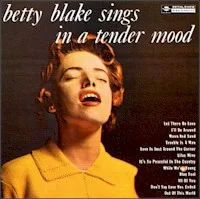Time: 49:56
Size: 114.3 MB
Styles: Swing, Jazz/Blues
Year: 2005
Art: Front
[3:26] 1. Holiday For Swing
[3:18] 2. Tippin’ In
[3:31] 3. Bicycle Bounce
[3:23] 4. Shipyard Ramble
[3:42] 5. Soft Winds
[2:51] 6. Caldonia
[3:17] 7. Blue Sea
[3:35] 8. Drifting Along
[3:25] 9. No Use Squawkin'
[3:00] 10. Good Dip
[2:56] 11. Lucky Seven
[3:27] 12. S’posin'
[3:36] 13. Uncle Bud
[3:01] 14. Riff Time
[3:22] 15. Country Boys
b. 26 July 1914, Birmingham, Alabama, USA, d. 11 November 1993, New Jersey, USA. By the time he began playing trumpet at the age of 13, Hawkins had already mastered drums and trombone. It was on trumpet, however, that he established his name as a flamboyant player with an astonishing range. Initially an imitator of Louis Armstrong, Hawkins became leader of the ’Bama State Collegians, an orchestra that he built up into an excellent big band. In the 30s, Hawkins rivalled much bigger names in engagements all across the USA, and in particular at prestigious New York venues such as Roseland and the Savoy. He hired good section men and front-rank soloists, not least trumpeters with whom he happily shared the spotlight. Billed as The Twentieth Century Gabriel, Hawkins made a number of very successful records, including ‘After Hours’ and ‘Tuxedo Junction’, the latter a composition by Hawkins and several members of the band which became their theme tune.
Hawkins continued to lead his big band throughout the 40s, surviving the winter of 1946/7 which saw the end of many name bands. In the 50s he compromised under financial pressure and reduced the band in size, but regularly reassembled the larger unit for special events. In the 60s and 70s he led small groups at New York hotels and clubs and also made occasional appearances at festivals, including a visit to Europe in 1979. In 1986 he was on board the SS Norway for the Fifth Annual Floating Jazz Festival. In much the same manner as his white contemporary Harry James, Hawkins succeeded in combining a spectacular technique and an acute awareness of commercial demands with an innate feeling for good jazz. ~AllMusic
Hawkins continued to lead his big band throughout the 40s, surviving the winter of 1946/7 which saw the end of many name bands. In the 50s he compromised under financial pressure and reduced the band in size, but regularly reassembled the larger unit for special events. In the 60s and 70s he led small groups at New York hotels and clubs and also made occasional appearances at festivals, including a visit to Europe in 1979. In 1986 he was on board the SS Norway for the Fifth Annual Floating Jazz Festival. In much the same manner as his white contemporary Harry James, Hawkins succeeded in combining a spectacular technique and an acute awareness of commercial demands with an innate feeling for good jazz. ~AllMusic
Holiday For Swing mc
Holiday For Swing zippy




















